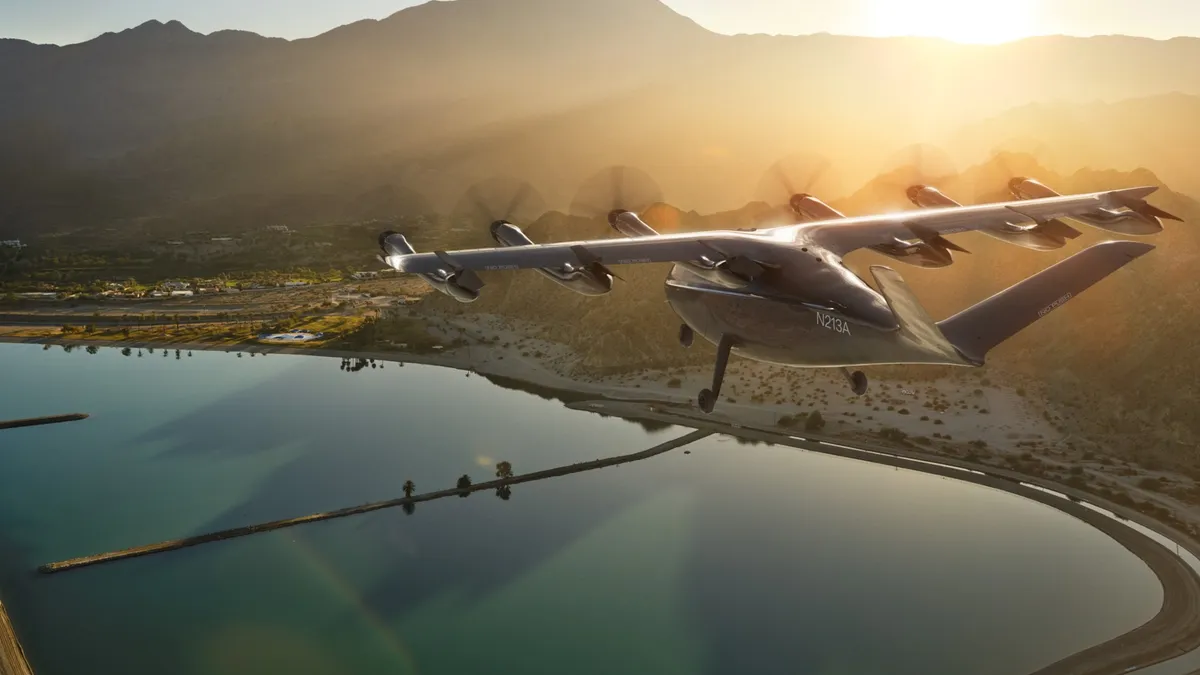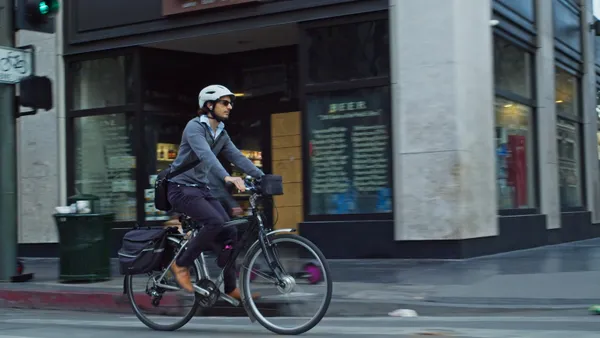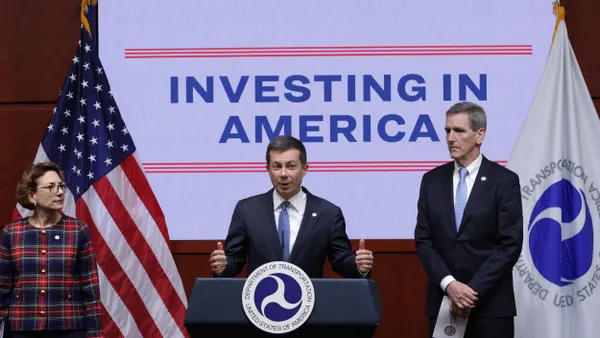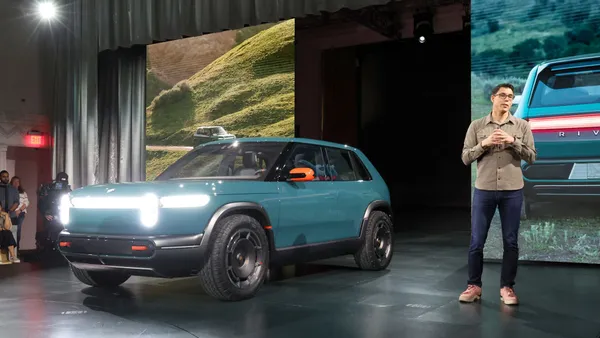UPDATE, March 10, 2020: Archer said Tuesday it would begin an air taxi network in Miami in 2024, adding to its previous pledge of a similar network in Los Angeles.
The company said its electric vertical takeoff and landing aircraft would help address some of the region's mobility and congestion challenges. Miami Mayor Francis Suarez said it could also help people navigate water-locked areas that are currently only accessible by highway.
Dive Brief:
- Archer, a California-based electric vertical takeoff and landing (eVTOL) aircraft company, committed last week to launch an urban air mobility (UAM) network in Los Angeles by 2024, a move it said would both alleviate congestion and encourage residents to "explore" their local area more.
- The eVTOLs — also known informally as "flying cars" — can travel distances of up to 80 miles and would charge users between $3 and $4 a mile, Archer co-founder and co-CEO Adam Goldstein said in an interview. Archer received a $1 billion commercial order from United Airlines and is partnering with the company for operations, maintenance and safety, and will likely make Los Angeles International Airport (LAX), which already serves as a hub for United, as an operations base for its network.
- At the same time, Archer is working to receive certification for its aircraft from the Federal Aviation Administration (FAA), a process Goldstein said should be complete in time to launch the network in 2024. The company is also set to list on the New York Stock Exchange later this year through a merger with special purpose acquisition company (SPAC) Atlas Crest Investment Group.
Dive Insight:
Goldstein said Archer's ambitious UAM network is possible as the eVTOL technology, regulations and infrastructure are all in place, meaning the whole sector should soon be ready to enter what he called the commercialization phase that allows riders to use the aircraft. He pointed to public remarks made last year by Jay Merkle, executive director of the FAA's Unmanned Aircraft Systems (UAS) Integration program, who said that flying cars are "more than just hype" and are close to reality.
Los Angeles has looked to position itself as a leader on UAM, with the city late last year announcing the Urban Air Mobility Partnership to educate residents on the aircraft and design a policy toolkit for other local governments to use to prepare for flying cars. Goldstein said the city's innovative approach to new technologies, supportive elected officials, temperate weather and notoriously poor traffic congestion made it the ideal place for Archer to launch its network.
Archer is planning to use LAX as an operations hub, along with other landing ports — skyports or vertiports — at smaller airports and on existing infrastructure like helipads and parking structures, Goldstein said.
"If you look at Uber and the ride-share companies, a third of their volume goes to and from the airports, it's very airport-centric," Goldstein said. "We hope this service will be really much broader than just airports and really try to help people be able to get back to going places."
Other cities are positioning themselves for a similar network: Miami Mayor Francis Suarez has met with the company and expressed interest also.
Urban air mobility will fundamentally transform cities with all-electric air taxis ????✈️.
— Mayor Francis Suarez (@FrancisSuarez) March 1, 2021
I'm excited to work with @ArcherAviation to build for millions across Miami, launching the first route in 2024.
Phenomenal meeting with @adcock_brett @adamgoldstein13 @ngoel36 today! pic.twitter.com/uBKuOJamEN
The company's air taxi network will not scale up overnight, Goldstein said, with Archer focused on public education around eVTOLs and showing they are safe for everyday use. But he said the company is confident once city residents see flying cars are much quieter and more environmentally friendly than helicopters or other aircraft, people will accept them.
"The great thing about this product is it's exciting, and everybody always wants to talk about it," Goldstein said. Those discussions are important to gradually educate consumers and advocate for the new mode of transport, he added, to allow to "launch in those cities over a multi-year period," not just "one day show up."
There are signs national lawmakers are also starting to pay closer attention to the promise of aerial mobility. Earlier this week, U.S. Sens. Jerry Moran, R-KS, and Kyrsten Sinema, D-AZ, introduced the "Advanced Air Mobility (AAM) Coordination and Leadership Act." The bill would instruct the U.S. Secretary of Transportation to lead a working group and work with the civil aviation industry to review policies and programs to help advance the aircraft and make recommendations in areas like safety, security and any federal investments needed.
That bill comes on the heels of a report from Deloitte and the Aerospace Industries Association that estimated AAM, which includes eVTOLs and drones, could be worth as much as $115 billion by 2035 and create 280,000 jobs. Another eVTOL company, Joby Aviation, is positioning itself to make a big splash in the space with a public listing of its own planned later this year ahead of a 2024 air taxi launch.
With the Los Angeles metropolitan area notorious for congestion and short-distance trips taking a long time by car, Goldstein said it could help revitalize traveling in the area.
"It will change the way we think about living and working and I think people will be excited to go back and explore their local areas and really start to live the life they want to live," he said.












